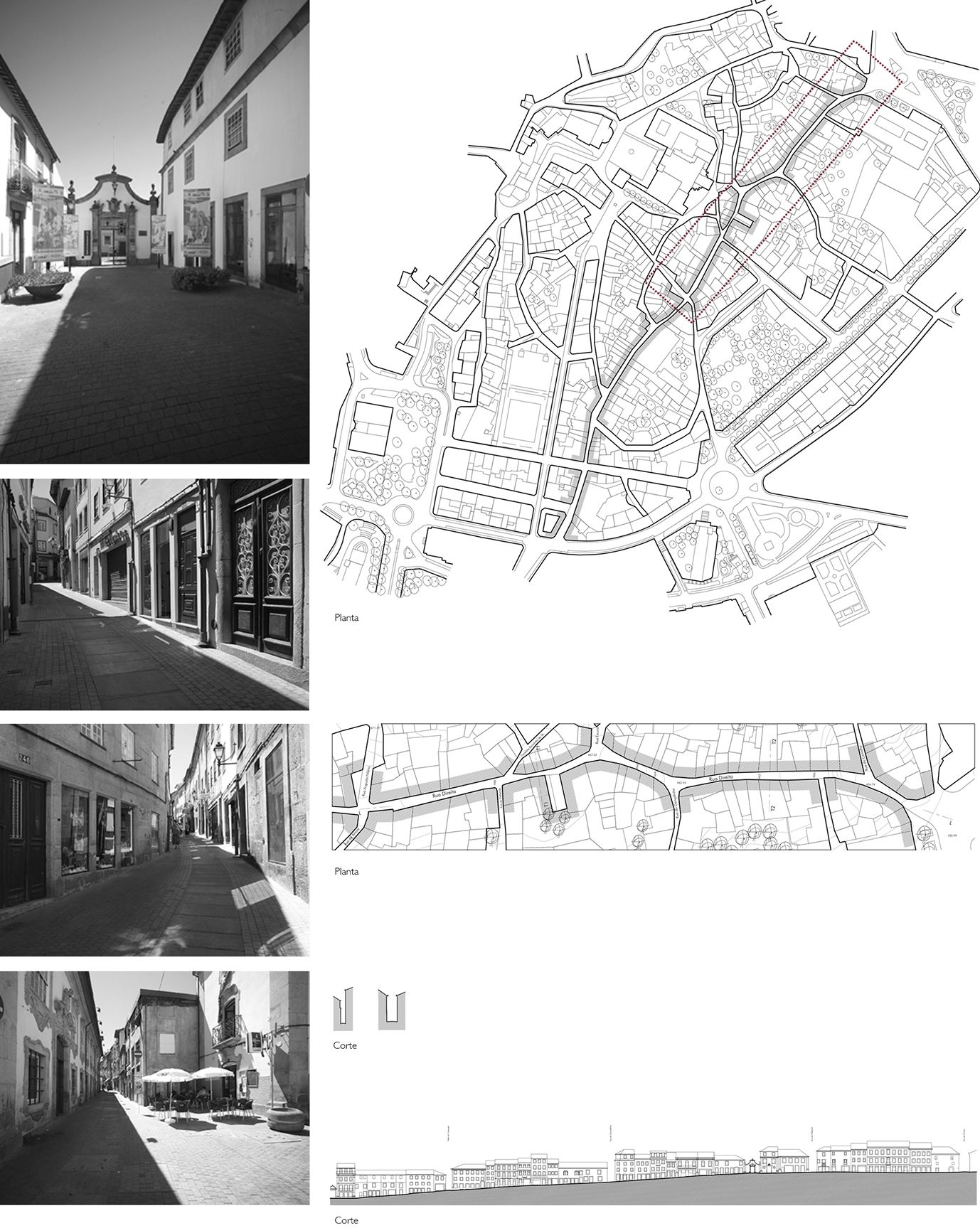VISEU / Rua Direita
The Direita (Straight) street in Viseu, in time also known as the Stalls Street, located inside the previously walled enclosure, running in the northeast to southeast sense. Despite the naming Straight Street, presents itself as a variant of this characteristic urban element typology of the Portuguese city, because connecting two wall gates and only allow indirect access to the built and functional main city ensemble, constituted by the Cathedral and related functions.
It develops in at half hillside on a regular level, with the exception of the strong slope in the northern third. The street divides the walled area into two areas: an area to the west, higher, in which the Cathedral Square is the dominant platform and an area to the east, lower and of lesser relative importance.
This structural axis started in the south on a missing wall gate, presenting still today a small extension to the intersection of the Formosa Street, in the so-called "four corners", after aligning with the Andrades Street, old São Martinho Street. In the north, the street ended at Mouzinho de Albuquerque Square, a former Freiras Square, finally stopping at the Knights Gate that marked the end of the Afonso V wall.
With about 500 meters in length, the Direita Street has a slightly sinuous configuration, varying in its cross-section between 3 and 4 meters, intercepted by transversal sloped streets or stairways usually mismatched. It is flanked by a dense built area, of between 2 and 4 floors, with buildings of different ages and formal characteristics, as varied as sober granite buildings with beveled Manueline spans with decorated surfaces, decorated seventh-century large manors or eighteenth century plain buildings.
The typological variant of the Direita street in Viseu, joining two gates, can be justified in its origin as the cardo maximus of the Roman city, crossed by a decumanus maximus which is now identified in Gonçalino Street. The events that the city of Viseu suffered over time, did not take the role of main urban axis, were the most important roads arrived, and where trade and many legal functions were located, despite the progressive blurring of commercial functions in the twentieth century, which moved to the new axes, such as the Formosa Street, and more recently for the large peripheral shopping centers.
The Direita Street remains the main street crossing the oldest core of Viseu, being today closed to road traffic and occupied by an intense but less prestigious trade, with a life that intensifies at certain times of the day.
